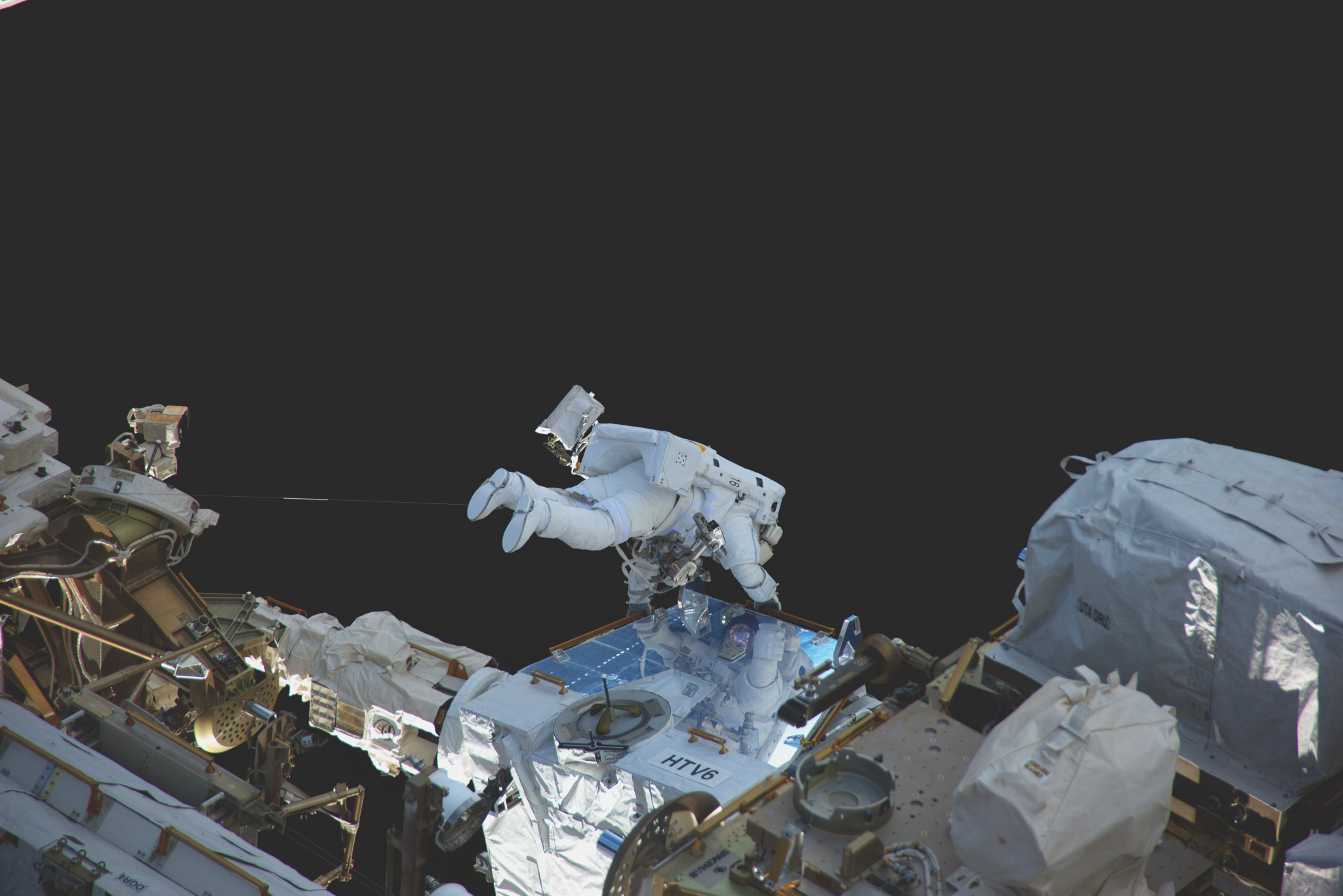Once fully operational, this antenna will create an additional bi-directional KA-band data transmission for the Space Station, providing a direct link between the Columbus laboratory and Europe, for researchers and astronauts, at home broadband speeds.
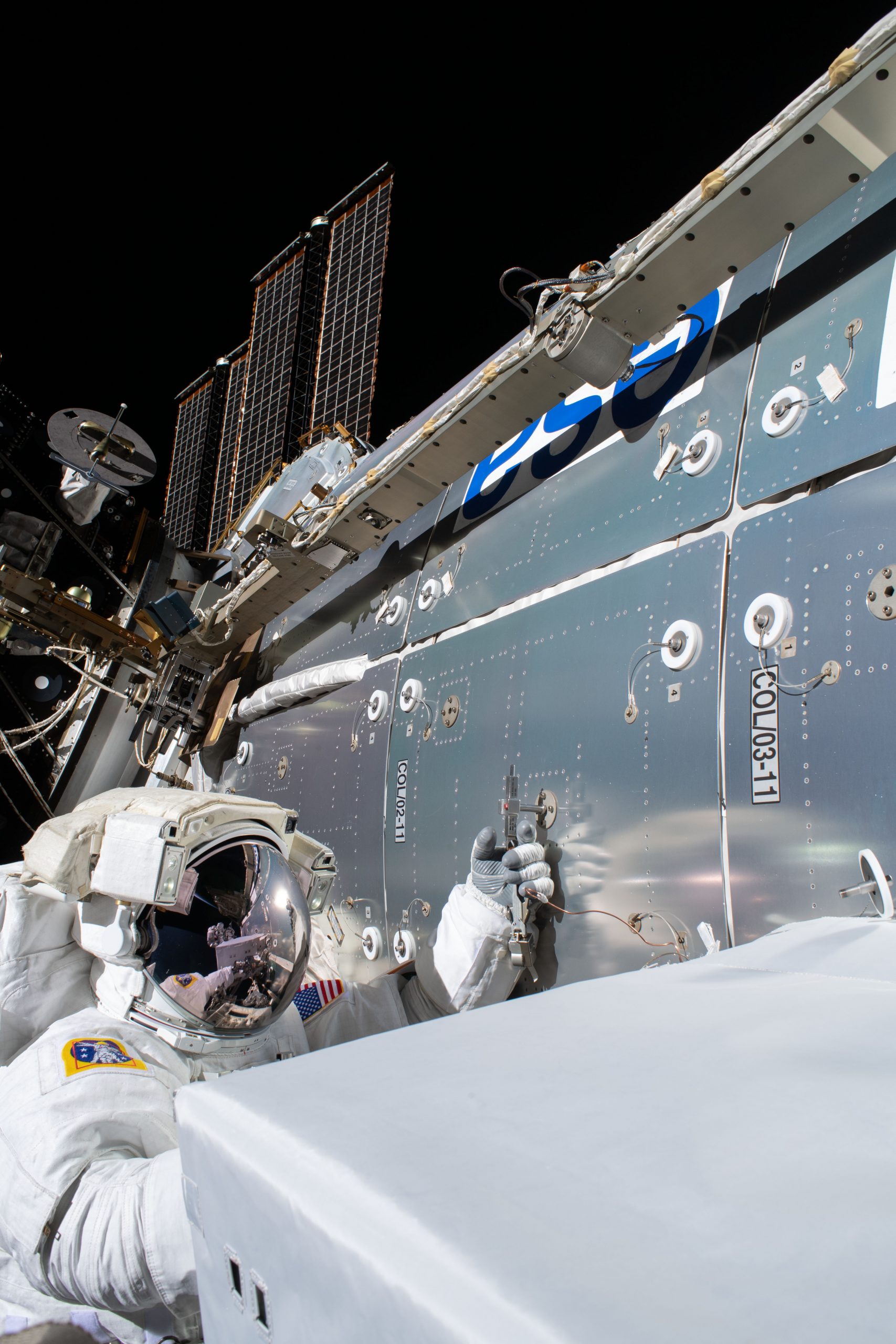
Installing ColKa space antenna on the International Space Station. NASA.
The fridge-sized unit was transported by Victor from the airlock to the worksite on the Canadarm2 robotic arm. There, the spacewalking duo set to work unscrewing and screwing bolts to hold the antenna in place and routing cables for power and data, guided by ESA astronaut Andreas Mogensen over the radio from NASA’s mission control centre in Houston.
But it wasn’t all smooth spacewalking. Despite seemingly secure connections, the heaters did not activate as expected – an issue solved by removing the cover.
From no to go
Though ColKa’s heaters didn’t appear to be drawing power initially, the spacewalkers proceeded to remove and jettison the antenna’s temporary protective cover to burn up safely in Earth’s atmosphere.
With the cover removed, the temperature dropped. Colka’s heaters activated and European ground crews breathed a collective sigh of relief as they reported ColKa is safely installed.
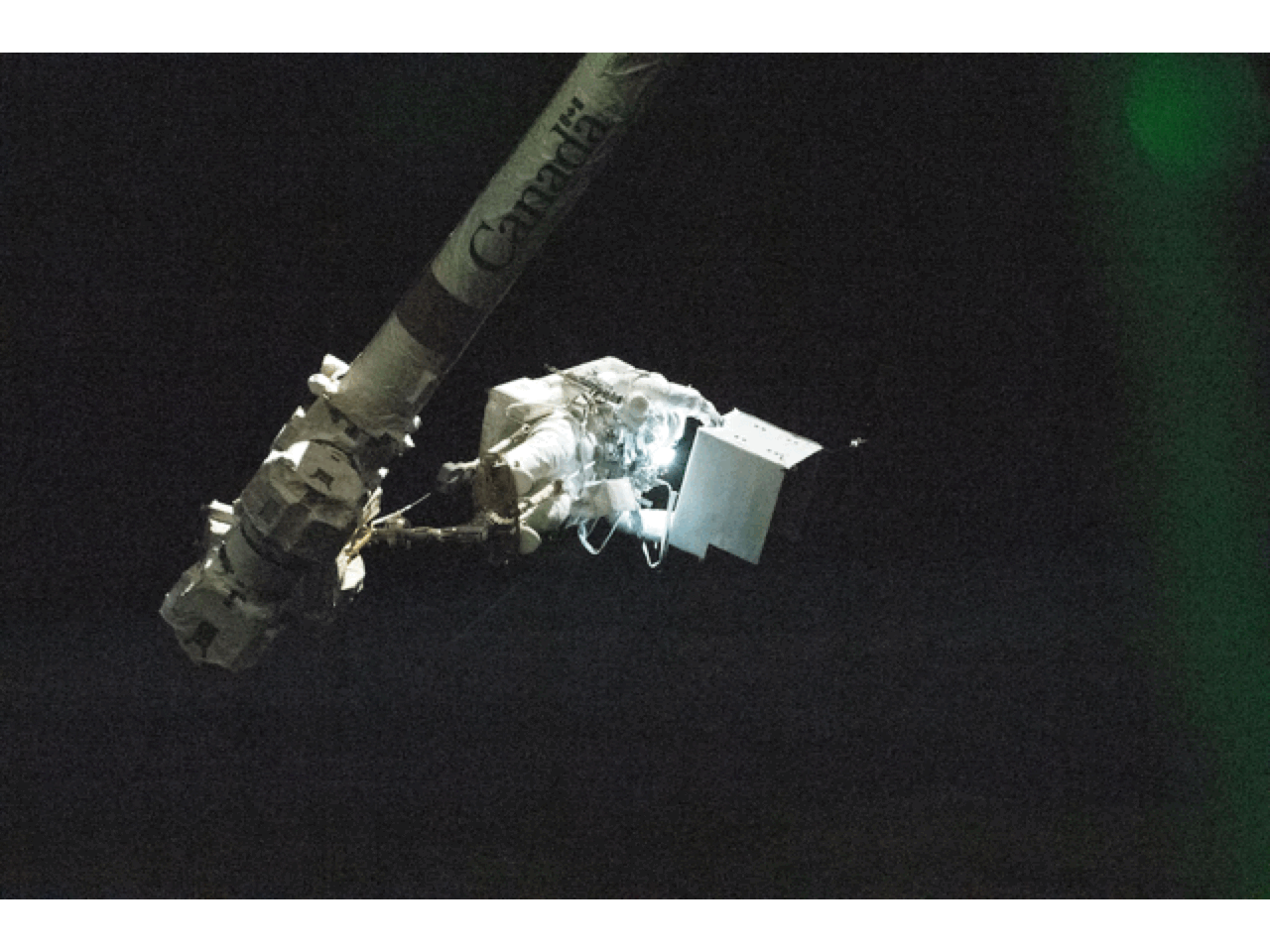
NASA astronaut Victor Glover jettisons ColKa’s protective cover during the installation spacewalk.
Why is heating important?
Space is one of the harshest environments imaginable. Above the insulating atmosphere of the Earth, spacecraft are subjected to extremes of temperature, both hot and cold, and a significantly increased threat of radiation damage.
Depending on the Station’s position in relation to the sun, exterior temperatures can climb as high as 121ºC or drop as low as -157ºC. Engineers designing external facilities, like ColKa, need to account for these extreme conditions and incorporate heating and cooling systems to ensure safe and effective operations in space.
Where to from here?
Like any new addition, ColKa requires a bit of testing to ensure all is working as it should. This testing is carried out by teams at ESA’s Columbus Control Centre (Col-CC) in Oberpfaffenhoffen Germany, who manage all of Columbus’ systems and software from the ground.
Initial activation from Col-CC started on Friday 29 January and will continue throughout February.
Once all is up and running, ColKa will use the use the European Data Relay System (EDRS) – dubbed the ‘SpaceDataHighway’ – to relay data directly between the Station and European soil via the system’s ground station in Harwell, UK.
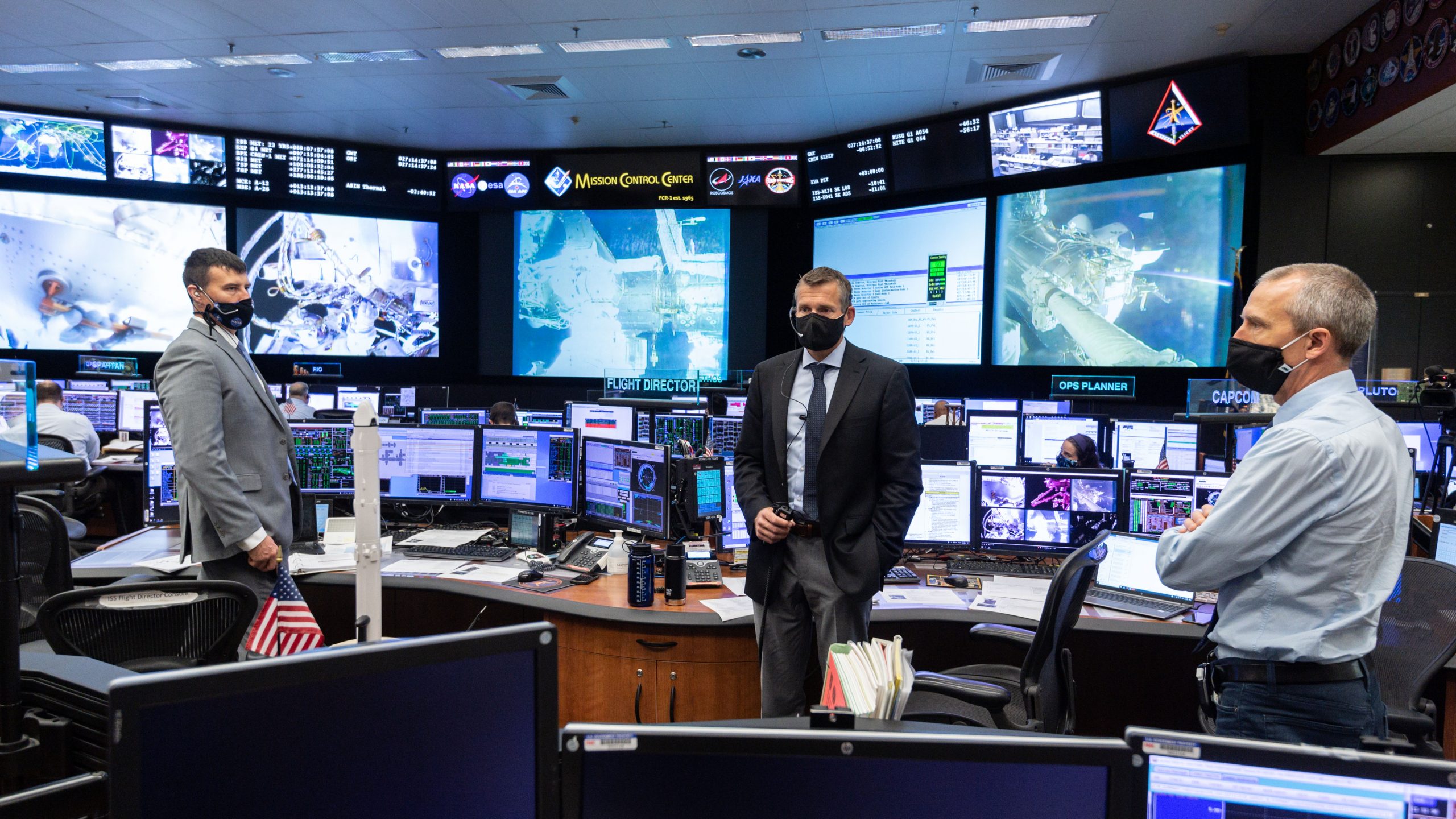
ESA astronaut Andreas Mogensen guides NASA astronauts through the ColKa installation spacewalk from NASA’s mission control centre. NASA.
Space platform Bartolomeo
ColKa wasn’t the only European facility keeping astronauts busy on Wednesday. Mike and Victor were also tasked with connecting power and data cables for exterior commercial research platform Bartolomeo.
Similarly to the ICE Cubes facility inside Columbus, the Airbus-built Bartolomeo platform is an ESA industrial private partnership that aims to attract new European users to the Station – offering fast, simple and affordable access for research and technology experiments outside the Station’s outer shell.
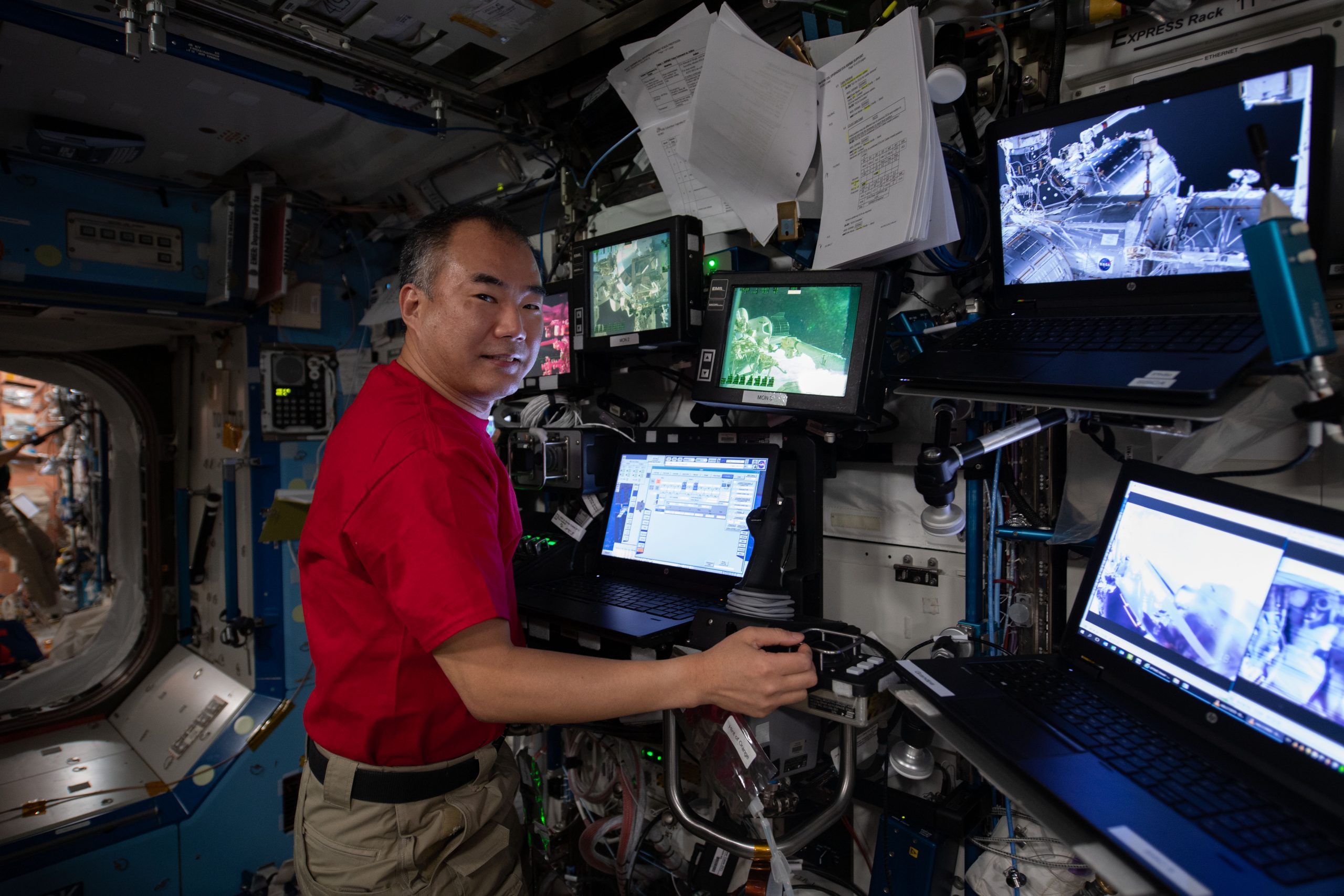
JAXA astronaut Soichi Noguchi supports with Canadarm2 robotic arm operations from within the International Space Station. NASA.
In this case, the spacewalkers weren’t able to connect all the required power cables between the platform and Columbus. Two out of four are now connected with a partially tightened lever, secured by a tie wrap. These drew power as expected.
Due to time constraints, the other two connectors were temporarily capped and safely secured allowing teams to determine the next steps for Bartolomeo’s connection and operation.
It is likely they will be connected during a future spacewalk so… watch this space for more Bartolomeo.


